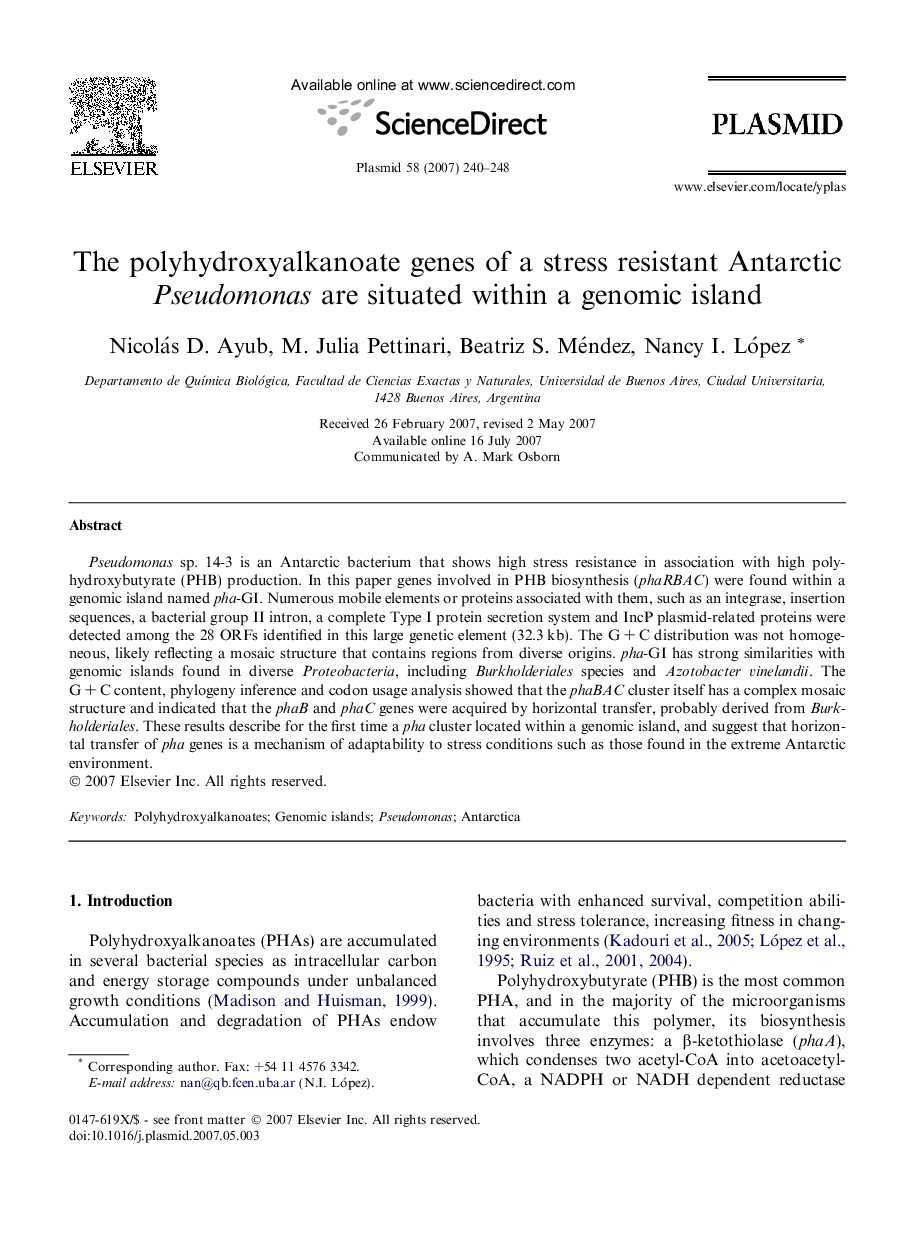| Article ID | Journal | Published Year | Pages | File Type |
|---|---|---|---|---|
| 2824505 | Plasmid | 2007 | 9 Pages |
Pseudomonas sp. 14-3 is an Antarctic bacterium that shows high stress resistance in association with high polyhydroxybutyrate (PHB) production. In this paper genes involved in PHB biosynthesis (phaRBAC) were found within a genomic island named pha-GI. Numerous mobile elements or proteins associated with them, such as an integrase, insertion sequences, a bacterial group II intron, a complete Type I protein secretion system and IncP plasmid-related proteins were detected among the 28 ORFs identified in this large genetic element (32.3 kb). The G + C distribution was not homogeneous, likely reflecting a mosaic structure that contains regions from diverse origins. pha-GI has strong similarities with genomic islands found in diverse Proteobacteria, including Burkholderiales species and Azotobacter vinelandii. The G + C content, phylogeny inference and codon usage analysis showed that the phaBAC cluster itself has a complex mosaic structure and indicated that the phaB and phaC genes were acquired by horizontal transfer, probably derived from Burkholderiales. These results describe for the first time a pha cluster located within a genomic island, and suggest that horizontal transfer of pha genes is a mechanism of adaptability to stress conditions such as those found in the extreme Antarctic environment.
